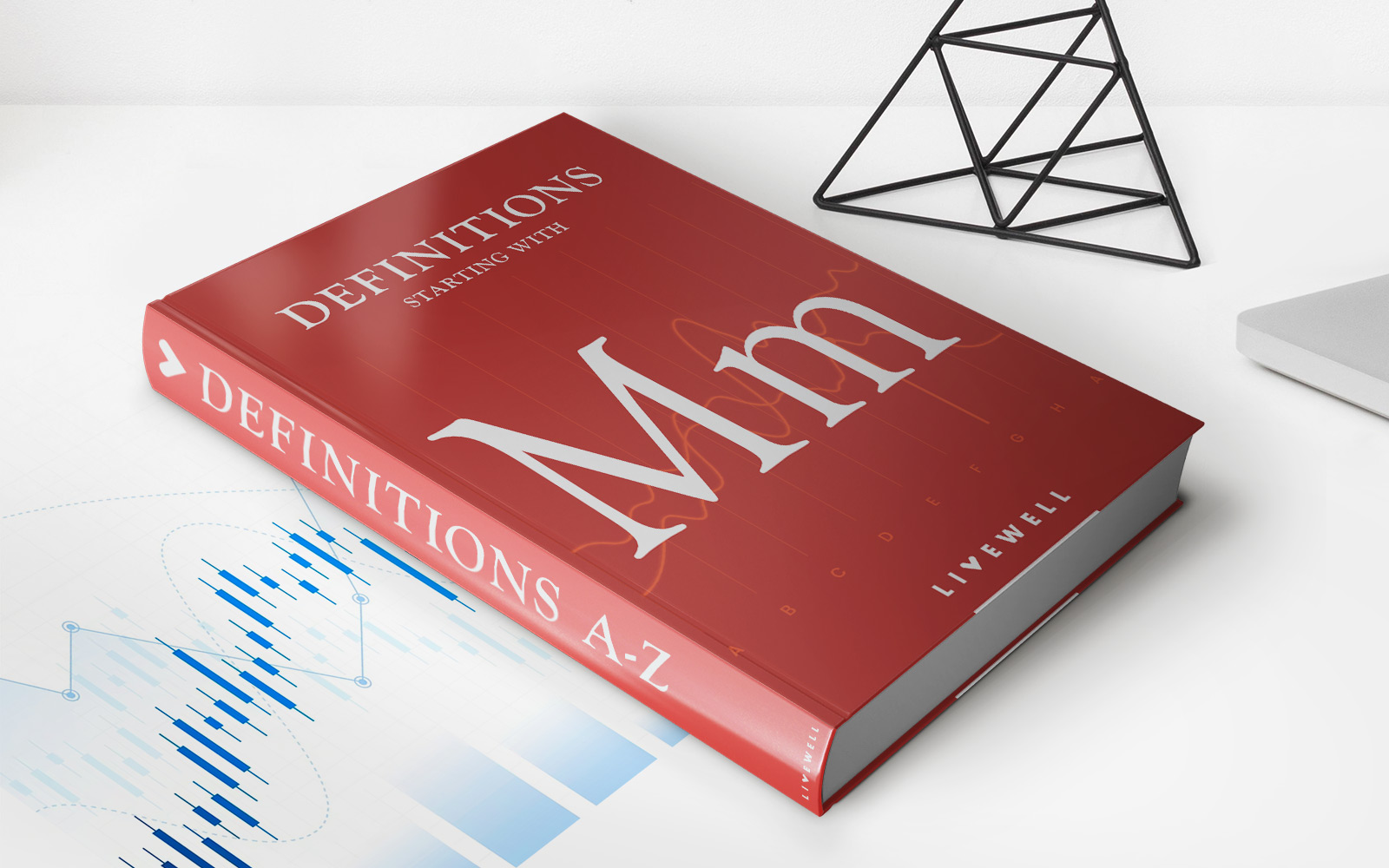Home>Finance>How Do Mergers And Acquisitions Affect Employees


Finance
How Do Mergers And Acquisitions Affect Employees
Published: February 24, 2024
Discover the impact of mergers and acquisitions on employees in the finance sector. Learn how these changes affect the workforce and organizational culture.
(Many of the links in this article redirect to a specific reviewed product. Your purchase of these products through affiliate links helps to generate commission for LiveWell, at no extra cost. Learn more)
Table of Contents
**
Introduction
**
Mergers and acquisitions (M&A) are significant events in the corporate world, often making headlines for their impact on businesses, shareholders, and the economy. While these transactions primarily focus on financial and strategic gains, they also have a profound influence on the employees of the involved companies. Understanding how M&A activities affect employees is crucial for both employers and workers alike. This article delves into the multifaceted impact of M&A on employees, shedding light on the various aspects that come into play during these transformative events.
The process of M&A involves one company taking over another, leading to a consolidation of resources, operations, and often, cultures. Such changes can trigger a range of emotions and uncertainties among employees, from concerns about job security to the potential for enhanced career opportunities. As M&A activities continue to shape the business landscape, it is essential to explore the implications for the individuals who form the backbone of these organizations. Through this exploration, we aim to provide insights into the challenges, opportunities, and considerations that arise for employees amidst M&A activities.
**
Understanding Mergers and Acquisitions
**
Mergers and acquisitions (M&A) are strategic business activities that involve the consolidation of companies through various financial transactions. In a merger, two companies combine to form a new entity, while an acquisition entails one company acquiring another, often resulting in the acquired company becoming a subsidiary of the acquiring entity. These activities are driven by diverse motives, including gaining a competitive edge, expanding market share, accessing new technologies, and achieving operational synergies.
From a financial standpoint, M&A activities can result in the creation of a more robust and diversified entity, potentially leading to improved performance and profitability. However, the impact of M&A on employees is a critical aspect that cannot be overlooked. Employees of the companies involved in M&A transactions often experience significant changes in their work environment, job roles, and overall job security.
Moreover, M&A activities can have a profound impact on the organizational culture, as companies with distinct values, work practices, and traditions come together. The process of cultural integration is pivotal in determining the success of M&A, as it directly influences employee morale, engagement, and productivity. Understanding the intricacies of M&A and their implications for employees is essential for both employers and employees to navigate through these transformative periods effectively.
Impact on Job Security
One of the most immediate concerns for employees during a merger or acquisition is the impact on their job security. The uncertainty surrounding potential layoffs, restructuring, and redundancies can create a sense of unease and anxiety among the workforce. As companies strive to streamline operations and eliminate duplicate roles, employees may face the risk of being made redundant or having their roles significantly altered.
During the initial stages of M&A, employees often seek clarity regarding the continuity of their positions and the potential changes to the organizational structure. This uncertainty can lead to decreased productivity, as employees grapple with the looming prospect of job loss. Moreover, the fear of job insecurity can permeate the work environment, affecting employee morale and overall job satisfaction.
On the other hand, M&A activities can also present opportunities for employees to explore new roles within the restructured organization. While certain positions may become redundant, other roles may be created to support the evolving business objectives. Employers play a crucial role in communicating transparently with their employees, providing insights into the potential impact on job security and offering support during the transition period.
Strategies to mitigate the impact on job security may include retraining and upskilling programs to equip employees with the skills needed for the transformed organization. Additionally, offering outplacement services and career counseling can help employees navigate potential job transitions effectively. By addressing the concerns related to job security and proactively supporting employees through the transition, organizations can mitigate the adverse effects of M&A on their workforce.
Changes in Job Responsibilities
Amidst mergers and acquisitions, employees often experience significant changes in their job responsibilities. As companies integrate their operations and restructure their organizational frameworks, existing roles may undergo transformation, and new positions may emerge. This dynamic shift in job responsibilities can evoke a mix of apprehension and anticipation among employees.
Employees may find themselves tasked with new responsibilities that align with the strategic objectives of the merged entity. This presents an opportunity for professional growth and skill development, allowing individuals to adapt to the evolving needs of the organization. However, the adjustment to new job responsibilities can also pose challenges, particularly if employees are required to operate in unfamiliar domains or adapt to different reporting structures.
Effective communication from management regarding the changes in job responsibilities is crucial in providing employees with a clear understanding of their evolving roles. Transparent discussions about the expectations, support mechanisms, and avenues for feedback can help alleviate concerns and facilitate a smoother transition. Moreover, providing training and development opportunities tailored to the new job requirements can empower employees to navigate their revised responsibilities with confidence.
It is essential for employers to recognize the impact of altered job responsibilities on employees’ work-life balance and well-being. Open dialogue and empathetic leadership can foster a sense of reassurance and enable employees to embrace the changes with a positive mindset. By acknowledging the challenges associated with shifting job responsibilities and proactively addressing them, organizations can foster a culture of adaptability and resilience amidst M&A activities.
Cultural Integration
One of the pivotal aspects of mergers and acquisitions is the integration of organizational cultures. Companies involved in M&A transactions often bring distinct values, work practices, and corporate cultures to the table. The process of merging these cultures is a complex and delicate undertaking, as it directly impacts employee engagement, morale, and the overall cohesiveness of the workforce.
Successful cultural integration involves aligning the values and norms of both organizations to create a unified and harmonious work environment. However, cultural clashes and differences in work styles can lead to friction and resistance among employees. It is imperative for organizational leaders to proactively address these challenges and foster a culture of inclusivity and collaboration.
Open communication and transparency play a pivotal role in facilitating cultural integration. Employees should be encouraged to express their perspectives and concerns, fostering a sense of ownership in the transition process. Additionally, leadership teams can organize cultural exchange programs, workshops, and team-building activities to bridge the gap between diverse work cultures and nurture a sense of unity.
Recognizing and celebrating the strengths of each organizational culture can also contribute to a smoother integration process. By acknowledging the unique contributions of both entities, employees are more likely to embrace the shared vision of the merged organization. Furthermore, establishing clear values and behavioral expectations that reflect the amalgamated culture can provide employees with a sense of direction and purpose amidst the changes.
Ultimately, cultural integration is an ongoing journey that requires patience, empathy, and a commitment to fostering an inclusive work environment. By prioritizing the well-being and engagement of employees throughout the integration process, organizations can lay the foundation for a cohesive and resilient workforce that thrives in the post-merger landscape.
Employee Morale and Job Satisfaction
Amidst mergers and acquisitions, employee morale and job satisfaction often undergo significant fluctuations. The uncertainty and apprehension surrounding M&A activities can impact the overall mood and motivation of the workforce. Employees may experience heightened stress levels, decreased job satisfaction, and a sense of detachment as they navigate through the transitional phase.
Effective communication and transparent leadership play a pivotal role in safeguarding employee morale during M&A activities. Providing regular updates, addressing concerns, and soliciting feedback can help alleviate anxiety and instill a sense of confidence in the workforce. Moreover, recognizing and celebrating the achievements of employees amidst the changes can bolster morale and reinforce a positive work culture.
Job satisfaction may also be influenced by the perceived impact of M&A on career prospects and professional growth. Employees may question the stability of their roles, the alignment of their values with the new organizational culture, and the opportunities for advancement. Employers can mitigate these concerns by offering career development initiatives, mentorship programs, and avenues for internal mobility within the restructured organization.
Empathetic leadership and a focus on employee well-being are instrumental in nurturing a positive work environment during M&A activities. Providing access to counseling services, promoting work-life balance, and recognizing the efforts of employees can contribute to sustaining job satisfaction and morale. Additionally, involving employees in the decision-making process and acknowledging their resilience amidst change can foster a sense of belonging and commitment.
By prioritizing the emotional well-being and job satisfaction of employees, organizations can mitigate the adverse effects of M&A on morale and cultivate a resilient workforce that remains engaged and motivated through the transitional period and beyond.
Communication and Transparency
Effective communication and transparency are foundational pillars in navigating the complexities of mergers and acquisitions (M&A) while safeguarding the well-being and engagement of employees. Clear and consistent communication during M&A activities is essential for mitigating uncertainty, alleviating concerns, and fostering a sense of trust within the workforce.
Employees look to organizational leaders for transparent updates regarding the progress of M&A activities, potential changes in the organizational structure, and the impact on their roles and responsibilities. Timely and candid communication can help dispel rumors, provide clarity, and demonstrate a commitment to keeping employees informed throughout the transition process.
Two-way communication channels, such as town hall meetings, feedback sessions, and Q&A forums, offer employees the opportunity to voice their questions, share their perspectives, and express their concerns. This inclusive approach to communication fosters a sense of involvement and empowerment, enabling employees to feel heard and valued amidst the changes brought about by M&A activities.
Transparency in decision-making processes, especially those pertaining to workforce restructuring and role realignment, is essential in building credibility and maintaining employee confidence. When employees understand the rationale behind strategic decisions and the potential implications for the organization and themselves, they are better equipped to adapt to the evolving landscape with resilience and understanding.
Moreover, transparent communication regarding the support mechanisms available to employees, such as retraining programs, career development initiatives, and mental health resources, underscores the organization’s commitment to the well-being of its workforce. This proactive approach can help alleviate anxieties and demonstrate a genuine concern for the holistic welfare of employees amidst the transformative phase of M&A.
By prioritizing open and transparent communication throughout M&A activities, organizations can cultivate a culture of trust, resilience, and collaboration, laying the groundwork for a cohesive and engaged workforce that thrives in the post-merger environment.
Retention of Key Talent
Amidst mergers and acquisitions (M&A), the retention of key talent emerges as a critical priority for organizations seeking to preserve their competitive edge and sustain operational continuity. Key employees, possessing specialized skills, institutional knowledge, and strategic insights, play a pivotal role in navigating the complexities of M&A activities and driving the long-term success of the merged entity.
Retaining key talent during M&A requires a strategic and proactive approach that acknowledges the value of these individuals and seeks to address their concerns and aspirations. Open and transparent communication regarding the organization’s commitment to retaining top performers can instill a sense of confidence and loyalty among key employees, mitigating the risk of talent attrition.
Identifying and acknowledging the contributions of key talent, while providing clarity regarding their roles and career paths within the restructured organization, is instrumental in fostering a sense of stability and purpose. Offering personalized development opportunities, mentorship programs, and avenues for leadership roles can further solidify the commitment to nurturing and retaining top performers.
Moreover, organizations can implement retention strategies tailored to the unique needs and motivations of key talent, such as performance-based incentives, flexible work arrangements, and opportunities for cross-functional collaboration. Recognizing the individual aspirations and professional growth trajectories of key employees can reinforce their commitment to the organization amidst the transformative phase of M&A.
Additionally, fostering a culture of inclusivity and empowerment, where the insights and expertise of key talent are valued and integrated into the post-merger landscape, can enhance their sense of belonging and purpose. By involving key employees in decision-making processes and acknowledging their role in shaping the future of the organization, employers can cultivate a resilient and cohesive workforce.
Ultimately, prioritizing the retention of key talent during M&A activities is a strategic investment in the long-term success and sustainability of the merged entity. By demonstrating a genuine commitment to the professional growth and well-being of key employees, organizations can fortify their competitive advantage and foster a culture of innovation and excellence.
Conclusion
Mergers and acquisitions (M&A) are transformative events that reverberate across organizations, reshaping their structures, cultures, and strategic trajectories. Amidst these changes, the impact on employees is profound, influencing their job security, responsibilities, morale, and overall job satisfaction. As organizations navigate the complexities of M&A activities, prioritizing the well-being and engagement of employees is paramount in ensuring a smooth and successful transition.
Effective communication and transparency emerge as linchpins in fostering a resilient workforce during M&A. By providing clear and consistent updates, addressing concerns, and soliciting feedback, organizations can mitigate uncertainty and build trust within the workforce. Transparent decision-making processes and a commitment to supporting employees through the transition underscore the organization’s dedication to their holistic welfare.
Cultural integration, another critical aspect of M&A, demands a nuanced approach that celebrates the strengths of diverse organizational cultures while fostering unity and collaboration. Acknowledging the impact of cultural integration on employee engagement and morale is essential in nurturing a cohesive workforce that thrives in the post-merger environment.
Furthermore, the retention of key talent plays a pivotal role in sustaining operational continuity and preserving the competitive advantage of the merged entity. Tailoring retention strategies to the unique needs of key employees and providing avenues for professional growth and development can solidify their commitment to the organization amidst the transformative phase of M&A.
In conclusion, the human element of M&A is integral to the success and sustainability of the merged entity. By prioritizing open communication, fostering cultural integration, and retaining key talent, organizations can navigate the complexities of M&A activities while nurturing a resilient and engaged workforce. As the business landscape continues to evolve, recognizing and addressing the impact of M&A on employees is paramount in shaping a thriving organizational culture that thrives amidst change.














